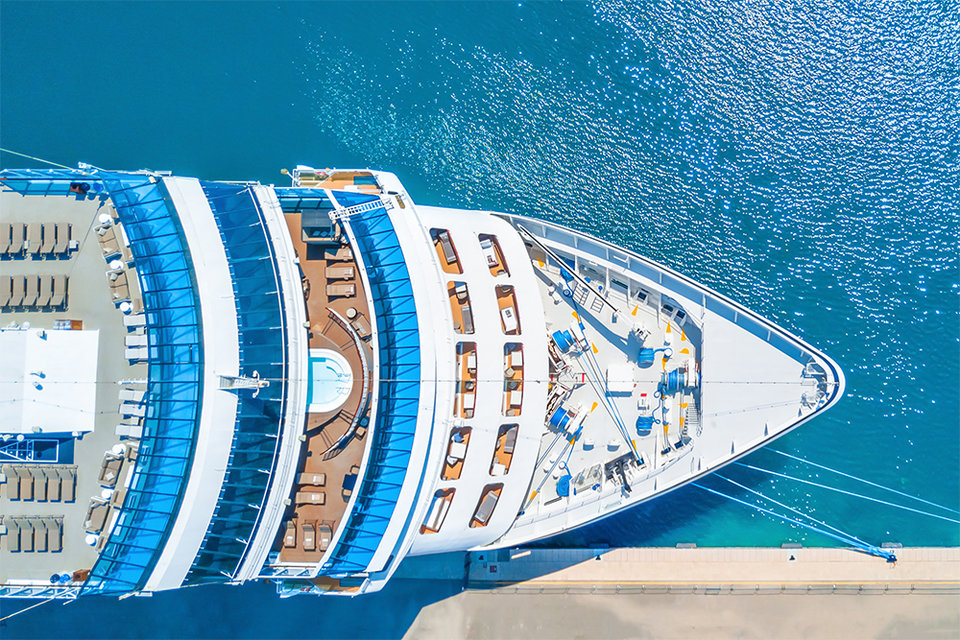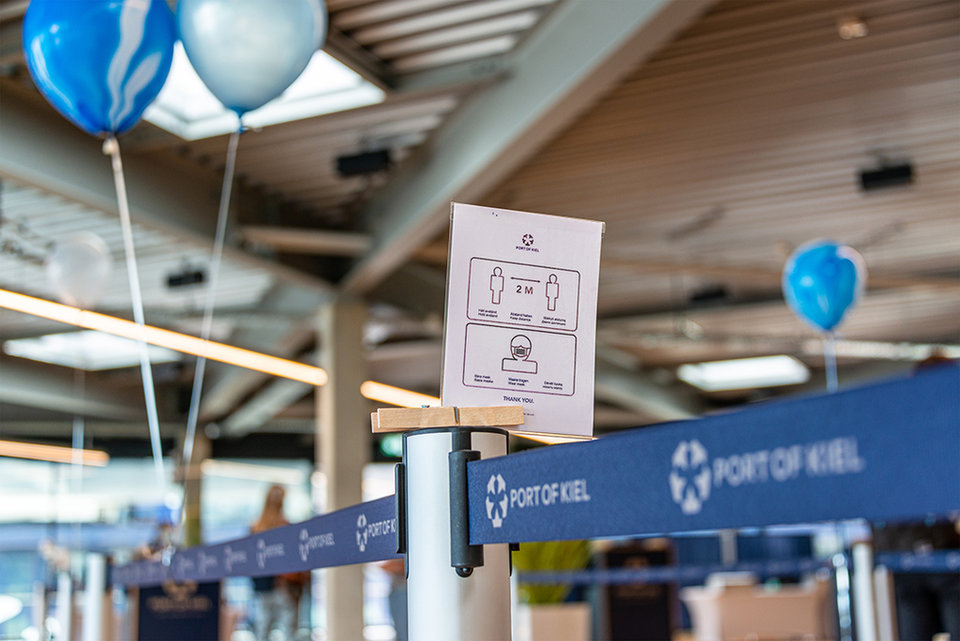
Asish Koshy, head of tour and cruise business at IBS Software. Image: IBS Software
Asish Koshy, head of tour and cruise business at IBS Software. Image: IBS Software
Q&A: Finding new cruise revenue sources with IBS Software
With cruises set to resume in the coming months and positive signs that demand is recovering, operators must now focus on recovering lost revenues. Luke Christou spoke to Asish Koshy, head of the tour and cruise business for IT solutions provider IBS Software, to find out how cruise operators can optimise their costs, manage risk and create new revenue sources as the industry overcomes Covid-19.
In September, Carnival Corporation announced a $2.9bn loss in Q3, taking its total losses in 2020 to more than $7bn. Like Carnival, most cruise operators have experienced leaky financials in recent months as the pandemic forced an almost total shutdown of the travel industry.
But with a rosier future slowly coming into focus, operators must now focus on balancing the guest experience and safety on board their vessels to attract guests and protect against further disruption.
For Asish Koshy, head of the tour and cruise business for IT solutions provider IBS Software, technology will play a crucial role in recovery.
Luke Christou: Could you give us an overview of your experience working with the cruise industry?
Asish Koshy: I’m an IBS Software veteran of nearly 25 years, and for the last 12 years my focus has been squarely on the cruise industry. Most of my time is spent hearing first-hand from cruise lines of all shapes and sizes around the world about the challenges they face.
They might span anything from purely operational concerns, to product diversification, to customer retention, to passenger experience – and just about anything in between. It’s our job to work with them to overcome those barriers through technology and implement digital platforms that help them grow.
What has changed in that time, and what lies ahead?
My time in the industry has coincided with an explosion of consumer demand for cruises, and huge technological change as cruise lines embrace the digital services that passengers have come to expect. It’s been an absolute rollercoaster! But Covid-19 means the biggest challenge is ahead.
The next chapter for the industry is all about weathering the storm, rebuilding and coming back stronger. There is no doubt in my mind that the companies that are able to transform themselves and their passenger services through digital technology are the most likely to thrive.
Where does IBS find that operators are typically overspending or unnecessarily spending?
It really depends, because no two cruise lines are that alike. This time last year my answer would be fairly different to today, because Covid-19 has been a real leveller in making companies prioritise where they are spending.
The bottom line is that all cruise lines need to pull off a tricky balancing act of reducing costs without compromising service levels. But they still need to stimulate demand by rolling out new experiences and procedures to convince passengers of their safety on board.
What changes do you expect to see as the cruise industry begins its recovery?
From an operational perspective, we will see cruise lines transform their digital platforms to significantly cut costs. For example, there will be a shift to “asset lite” cloud infrastructure and a focus on automation to boost crew productivity and streamline time-intensive areas like group booking operations.
But we’ll also see cruise lines invest in digital technology to transform the passenger experience at every single stage of the process – from booking to disembarkation. Given the understandably heightened sensitivities about Covid-19, passengers will only return when they are satisfied of their safety, and technology has a critical role to play in achieving that. Survival won’t be determined by cost-cutting alone.
Restart dates have been pushed back multiple times already. What can operators do to ensure survival should they face further disruption or delays?
At this stage, it is all about risk management. Managing risk, while making tentative steps toward recovery, is crucial to long term success. Technology can help them in two important areas.
Firstly, in managing decreasing demand. When demand dips, the main priority for cruise lines needs to be preserving liquidity and limiting cancellations. A guest wallet-based entitlements management system can pull multiple levers to increase cash-in-hand. For example, it can help provide guests with creative credit options to deter cancellations and provide dynamic promotions for redemption at a later date. It can also facilitate the bulk purchase of credits - for example, with companies buying incentives for employees who transfer credit to others.
Secondly, in managing risk through operational preparedness. Smart digital technology allows cruise lines to respond to last-minute itinerary changes around the world as the Covid-19 situation evolves, and even enables automated execution of evacuation protocols. Automation can help combat further disruption.

Embarkation is likely to see significant change, with reservation systems used to stagger the arrival of guests onboard. Image: penofoto / Shutterstock.com
Does Covid-19 present an opportunity to create new revenue streams that will continue to generate revenue once normal service resumes?
Yes, 100%. The harsh reality is traditional revenue streams will not sustain cruise lines while passenger volume remains low. They can and will find new sources of revenue, which in most cases will be underpinned by technology. Necessity is the mother of invention, after all.
The use of guest wallets to manage entitlements and the purchase of credits and loyalty currencies is definitely a revenue stream that can be sustained even after normal service resumes.
On board, cruise lines will promote spending by boosting the functionality of mobile apps. We expect cruise line apps and digital concierge services to become ubiquitous and to form the basis of all spending after embarkation. Purchases will be encouraged with rewards and redemption, and proactive sales incentivised through personalised offers.
Additionally, because ticket prices will inevitably be low to attract customers, cruise lines will launch innovative guest activity packages to increase revenues. For instance, to circumvent limited itineraries we will see more “land” packages from destination ports, as well as the marketing of ancillary sales pre-cruise. Dynamic pricing will be widely introduced and there will be a marked increase in newer business models like one-day cruises and cruises to nowhere.
How might technology assist in reducing heightened health concerns and encouraging passengers back aboard?
Technology will reinvent the many established processes in the cruise industry for the Covid-19 era.
Take check-in. Prior to Covid-19, a surprisingly high proportion of cruise lines either did not offer online check-in or made it optional. It will now become mandatory to cut down on human contact during the check-in process at the terminal and to reduce handling physical documents. Cruise lines will also require passengers to upload relevant medical documents during web check-in. They will then be ‘risk scored’.
Embarkation will also be radically changed to confine long queues of guests at the terminal to the past. Instead, cruise lines will extend their reservation systems to bring in staggered embarkation, based on factors such as a guest’s risk factor, loyalty status, cabin class or any special needs. Passengers deemed to be low risk can be fast-tracked aboard, with higher risk guests required to take part in thermal scanning tests.
What about on board? How will technology help to balance passenger satisfaction and safety?
On board, technology will transform the dining experience. Capacity in dining rooms is likely to be halved to support social distancing, and tables will be equipped with QR codes that guests can scan with their smartphones to bring up menus and digitally order meals direct to the galley. To enable multiple sittings for guests, the front-of-house service team will be able to view foodservice SLAs on mobile devices to ensure efficiency. In-room e-ordering will become widespread, allowing guests to use mobile apps and interactive TVs to order meals with contactless delivery to cabins.
Digital concierge services will provide guests with as much freedom to self-manage their experience with minimal human contact – and freeing crew to focus their time on sanitation. Equally, logistics technology will allow cruise lines to capacity-control shows and excursions.

The cruise industry has faced numerous delays to plans to resume service due to the Covid-19 pandemic. Image: Anton Watman / Shutterstock.com
How important will change and innovation be to maintaining revenue, survival, and future growth?
Standing still is not an option. Predictably, cruise lines with strong underlying digital platforms will find it easier to adapt. But most of the technologies required to fundamentally transform the guest experience and operational efficiency are developed and affordable services that can be simply adapted for new scenarios. Even those with legacy technology infrastructure can quickly and efficiently adapt.
As the cruise industry recovers, it will essentially go through a period of time where their load factor is at best 60%, which is typically below the break-even load factor. Cruise lines will have to considerably innovate to ensure that they are lowering the break-even levels – by tackling both revenue and efficiency levers.
The impact of Covid-19 digital transformation will not be short-term. Infusing new technology into the guest experience will only grow their expectations for future digital services to enhance their holidays. Cruise lines that get it right can not only stem revenue leakage in 2020 but set themselves up to gain a competitive advantage for the future.
Main image: Asish Koshy, head of tour and cruise business at IBS Software. Image: IBS Software
Q&A: FINANCES